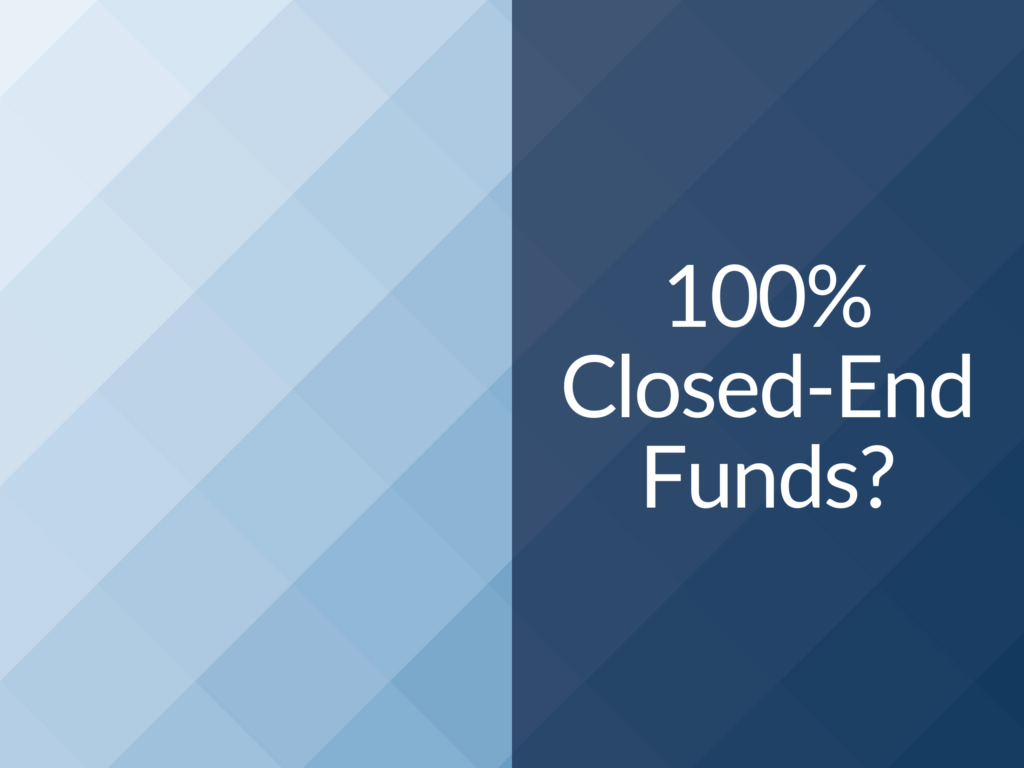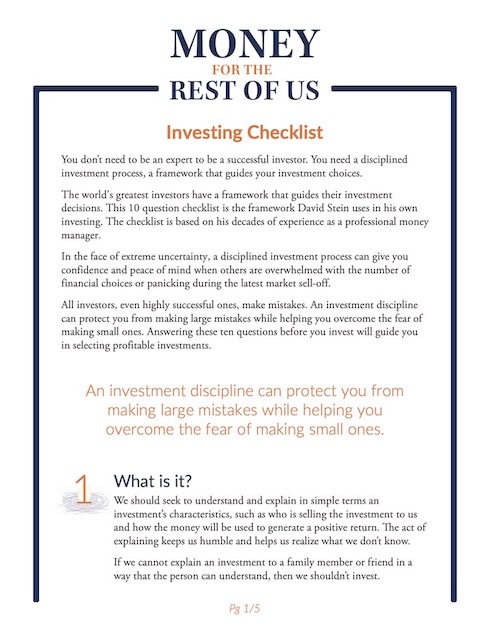We compare three approaches to closed-end fund investing: Opportunistic trading, the buy and hold income factory, and a systematic approach of selling closed-end funds after 5% gains.
We also explore the pros and cons of closed-end funds relative to open-end mutual funds and ETFs.

Show Notes
The Closed-End Fund Market, 2023—Investment Company Institute
How to Invest in Closed-End Funds—Money for the Rest of Us
Investing in Closed-End Funds Course—Money for the Rest of Us
Episode Sponsors
Related Content
How to Invest in Closed-End Funds—Money for the Rest of Us
Investing in Closed-End Funds Course—Money for the Rest of Us
Transcript
Welcome to Money for the Rest of Us. This is a personal finance show on money, how it works, how to invest it, and how to live without worrying about it. I’m your host, David Stein. Today is episode 517. It’s titled, “Should You Invest 100% of Your Retirement in Closed-end Funds?”
Recently, on the Money for the Rest of Us Plus forums, we got into this discussion of whether we should invest our entire retirement portfolio in closed-end funds. The Plus membership is our premium membership community. We have the forum, we have a weekly Q&A Plus episode, audio episode, there’s video lessons, there’s a closed-end fund course on there. I began investing in closed-end funds back in 1994 and became much more active in doing so during the Great Financial Crisis.
My approach to closed-end fund investing has generally been opportunistic, more of a trading strategy. I’ll start screening for closed-end funds when the overall financial markets are falling, because that’s when they get cheaper. The discount relative to the net asset value widens out. I’ll explain what that means in more detail in a few minutes. But that’s not the only way to invest in closed-end funds. We’ll take a look at two other approaches in this episode. But first, let’s discuss what a closed-end fund is.
Closed-end Funds Characteristics
A closed-end fund is a type of mutual fund where investors pool their money, and a professional money management team oversees the portfolio by selecting underlying stocks, bonds, and other securities. These are very old vehicles. The first closed-end fund was launched in the late 1700s in the Netherlands. The first ones in the U.S. were launched in the late 19th century. This investment vehicle, closed-end funds, is older than open-end mutual funds and definitely older than ETFs.
But it’s very much a niche strategy. There are only about 400 closed-end funds in the U.S, about $250 billion in assets. So each fund’s relatively small, about $500 million to $600 million in assets on average. That compares to over 7,000 open-end mutual funds with over $20 trillion in assets and more than 4,000 ETFs with over $10 trillion in assets. And the number of closed-end funds in the U.S. is shrinking. The number has fallen every year for 12 consecutive years, down upwards of 40% in terms of the number since 2011.
Why are closed-end funds shrinking? Well, they are an inferior investment vehicle relative to ETFs. So there’s been mergers in the closed-end fund space. Let’s take a look at the differences between an open-end mutual fund and a closed-end fund, and an exchange-traded fund. A closed-end fund, you can buy in the secondary market on an exchange. So it trades throughout the day, in the same way an exchange-traded fund does. Whereas an open-end mutual fund only trades at the end of the day.
A closed-end fund has a fixed number of shares, and so there is not an ongoing share creation process, as you see with open-end mutual funds and ETFs. The only way additional shares are outstanding in the closed-end funds is they do a follow-up offering, a rights offering, to allow existing shareholders to buy additional shares and new shareholders to buy shares. But there’s a structured process, it’s not ongoing—it’s a new securities offering, essentially.
With an open-end mutual fund, they trade at the end of the day, and the market price that it’s traded at equals the net asset value. So they’re connected. They’re equal. Whereas with a closed-end fund and an ETF, as they trade throughout the day, there can be a disconnect between the market price and the net asset value.
The net asset value—it’s calculated by taking the value of a fund’s assets or an ETF’s assets, including cash, subtracting out any debt there might be, and dividing by the number of shares. And so it’s the value of the holdings on a per-share basis.
And then, since an ETF and a closed-end fund trades, the market price can disconnect from the net asset value. Now, with closed-end funds, that’s by design. There isn’t a mechanism to narrow that discount. Whereas ETFs were designed with a mechanism, active participation of authorized participants and market makers to keep the market price in line with the net asset value.
So they’re trading the shares of the ETFs, they’re trading the underlying holdings of the ETFs. And ETFs have done a very good job of keeping the premium or discount of the price relative to the net asset value very close. Whereas with a closed-end fund, these discounts or premiums can last for years. And that’s a feature, a benefit, if you’re trading and you want to buy a closed-end fund at a discount, 80 cents on the dollar. You’re getting more assets per dollar when a closed-end fund sells at a discount.
Closed-end funds traditionally have focused on generating income. So, about 60% of closed-end funds are fixed-income investments. 40% are stock funds, but even the stock funds are trying to generate a high dividends, high distribution.
As a Money For the Rest of Us Plus member, you are able to listen to the podcast in an ad-free format and have access to the written transcript for each week’s episode. For listeners with hearing or other impairments that would like access to transcripts please send an email to team@moneyfortherestofus.com Learn More About Plus Membership »
